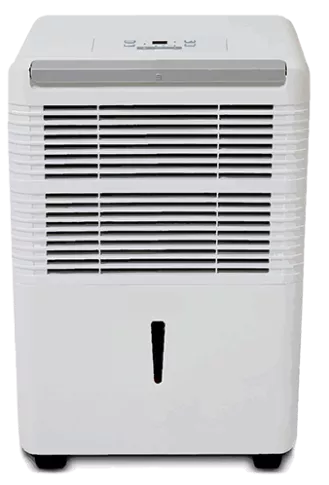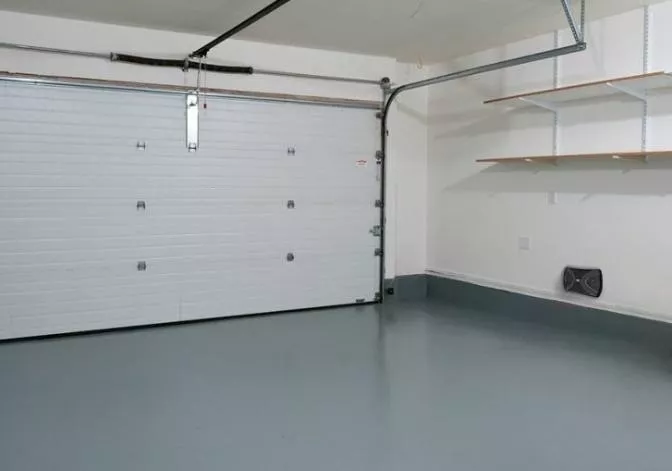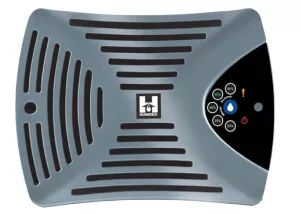You know that feeling when you walk into your garage to do some work on a project or use your home gym, only to get hit by that heavy dampness, whether it be cold damp or a hot, humid burst of air. It's not inviting either way, and it can actually lead to serious problems in your garage like mold and mildew or even corrosion. No matter what climate you live in, you need to find a way to combat the humidity in your garage for good. Here are some helpful tips for all seasons and climates.

What's with the humidity?
There are plenty of reasons that your garage may be damp. Here are just a few of the most common issues that homeowners experience:
- The garage or garage door is not properly insulated or doesn't have appropriate weatherstripping
- Your firewood storage is in the garage, which can generate a lot of moisture from the logs
- Your garage is also your laundry room, and the washer and dryer could be causing excessive moisture
- You have a lot of liquids stored in the garage
- Your floor drain could be causing humidity, whether it is backed up or even if it is freshly cleaned
- Your floor is totally sealed with an epoxy paint product, which doesn't allow for airflow to help reduce moisture
- You have cardboard boxes for storage that are drawing in moisture
- When you park in the garage and bring moisture in from outside (snow, rain, mud, etc.) on your vehicle
Most of these are easy enough to solve. Once you know the source, you'll want to measure the actual level of humidity in your garage. Place a hygrometer out there for 24 hours so that you can get an accurate reading. Now, there isn't necessarily a specific "comfortable" humidity percentage that is universal, but the idea is to get it lower. It might not ever be as low as it is indoors, but it can be better. If you have a cool garage, watch when heating it because the humidity can be really uncomfortable.
Without a hygrometer, you can check the humidity levels in a garage that is insulated in weathertight by looking at the windows. In colder temperatures, especially, you may notice condensation or even ice buildup on the bottom of the windowsills. This could be a sign that your humidity is too high.
How can I get rid of humidity?
You are never going to effectively eliminate your humidity issue if you do not have two major elements in place:
Your garage needs to be properly insulated
And
Your garage door needs to be properly insulated and weathertight.
If your garage walls are not insulated, it will be very difficult for you to maintain reasonable temperature and humidity levels. In cooler regions, your only option without proper insulation might be to use something like a wood stove for low‑cost heating that also helps draw out moisture.
In the case of your garage door, insulated means the door has a thermal resistance factor of R‑12 or better. This is typically achieved by injecting polyurethane foam between the walls of the garage door. The weather seals on the door should also be inspected. Do you have enough exterior perimeter weatherstripping, and is it installed effectively? It should overlap by about an inch and a half, and the bottom weatherstripping should prevent water from coming in at the ground level. Finally, the door threshold should have an outward slope so that it encourages water to flow away from the garage.
Ultimately, you're looking to identify all possible entry points for moisture, during any time of year. Once you have an idea of where the humidity is coming from, you'll be able to determine whether you can eliminate the source or if it's one that you will have to tolerate. Moving forward, we'll discuss getting rid of humidity, assuming that your garage and garage door are, indeed, properly insulated. Otherwise, it would be a wasted effort to continue in this process.
For those who don't use their garage space a lot, there's a really simple fix to alleviate some of the humidity. About 45 minutes to an hour before you intend to use the space, turn off the heat (if present) and then crack the garage door an inch or two off the ground. This will let the humidity out. If you have windows or access doors, use those to create a cross‑draft and speed up the process, or simply use a small fan to help move the damp air out.
A home dehumidifier can be a great tool to help remove humidity, too. Run it for at least a day, and longer if you want, at maximum dehumidification, and you should see the level drop by five to eight degrees.

If you use your garage a lot, you might want to invest in a higher‑end commercial dehumidifier that can actually be integrated with your home's HVAC system. Ultimately, it depends on how much you want to invest and how much you use the space.

 A vent is available that measures 9 x 6.5 x 4 inches that can be installed to vent the dampness out through a wall duct.
A vent is available that measures 9 x 6.5 x 4 inches that can be installed to vent the dampness out through a wall duct.Is a vent installed in the door effective? Actually, it isn't really going to help get rid of humidity as well as the other options might. Even with the option to open and close, this type of vent is only really effective at getting rid of odors.
Time to upgrade your garage door?
If you reside in the Ellington or Hartford area, give us a call at 1-877-828-5279. Contact us today to discuss how we can help you with your garage door replacement to improve the use of your garage, including helping you find something that fits your style and your budget.
Our team is happy to provide no‑obligation quotes through email, as well, or you can take a visit to our local showroom. If you need some help deciding or getting inspired, check out our image gallery to see what others have done or create your own custom design in our Design Centre.

Add new comment